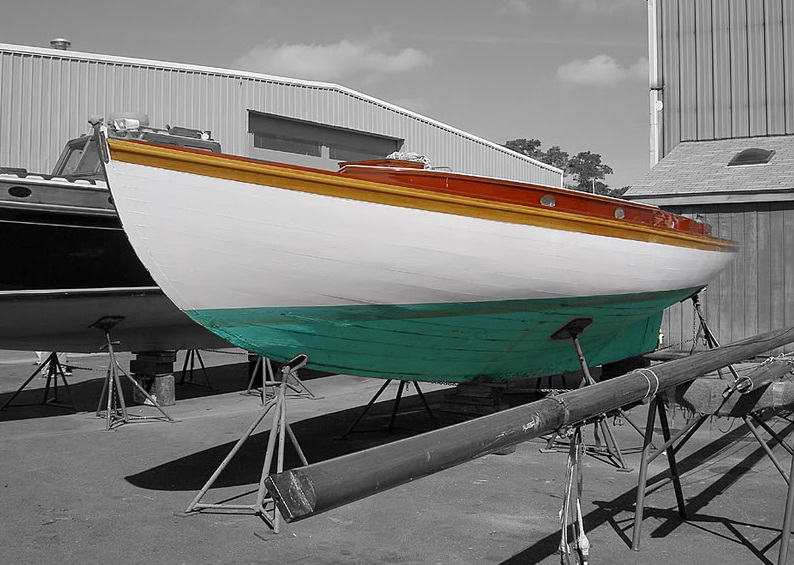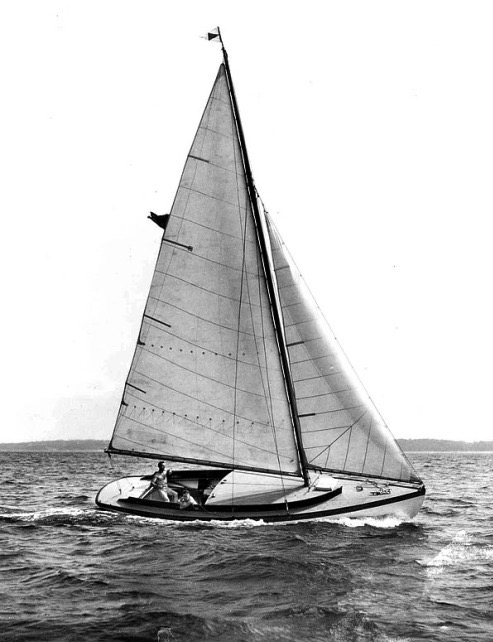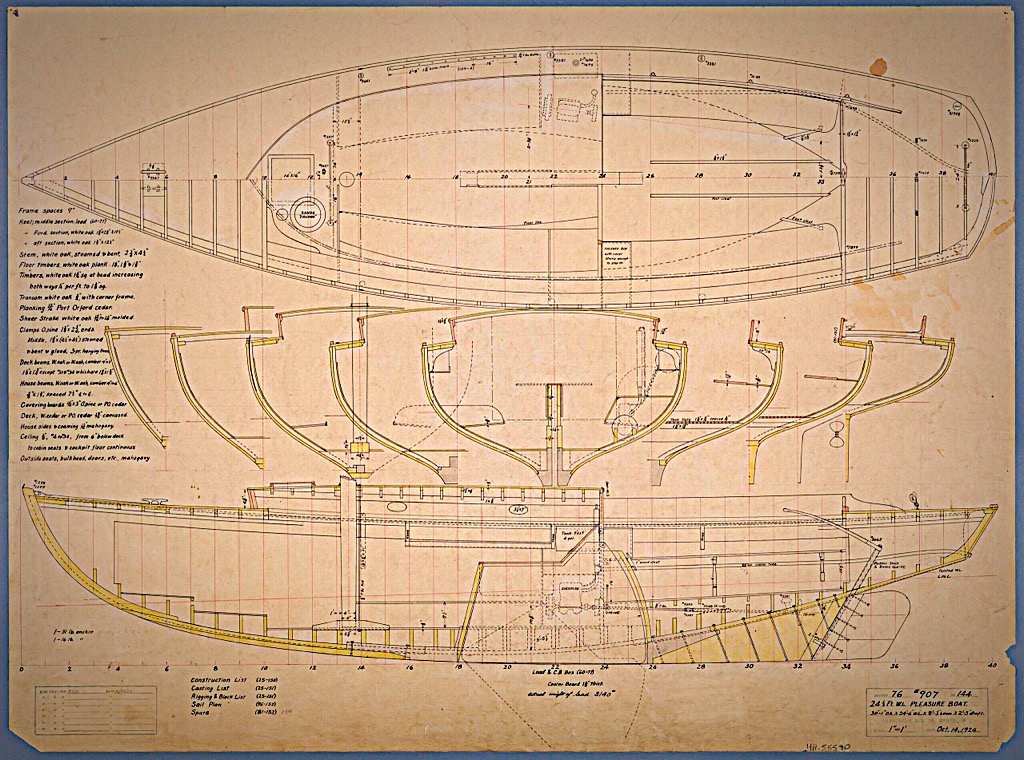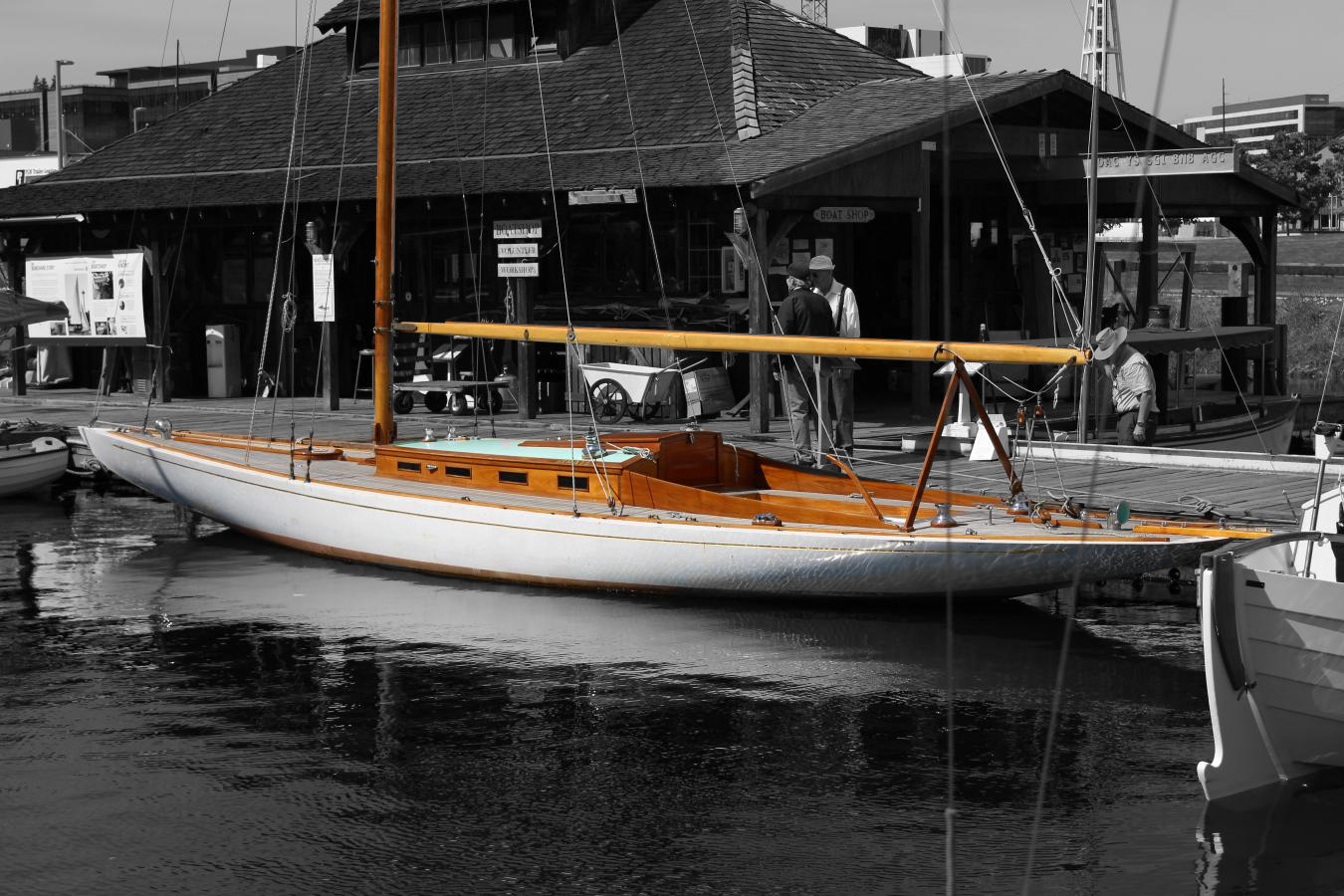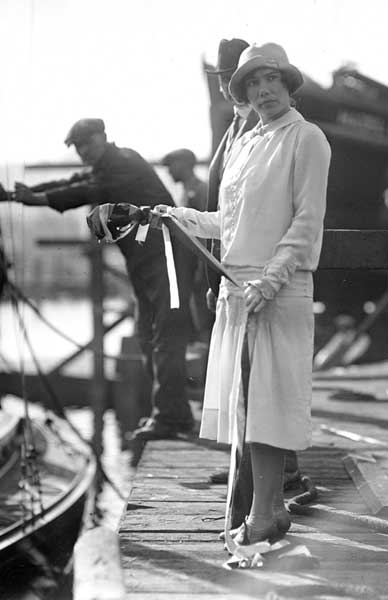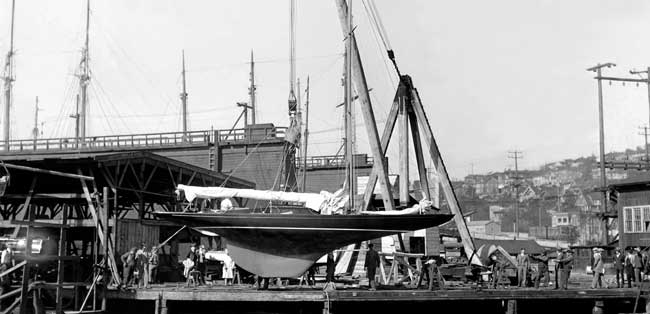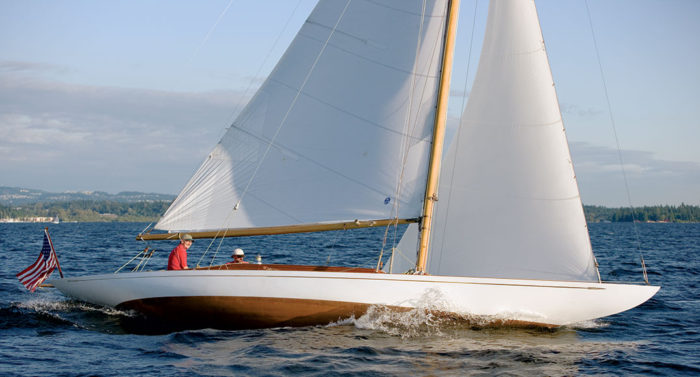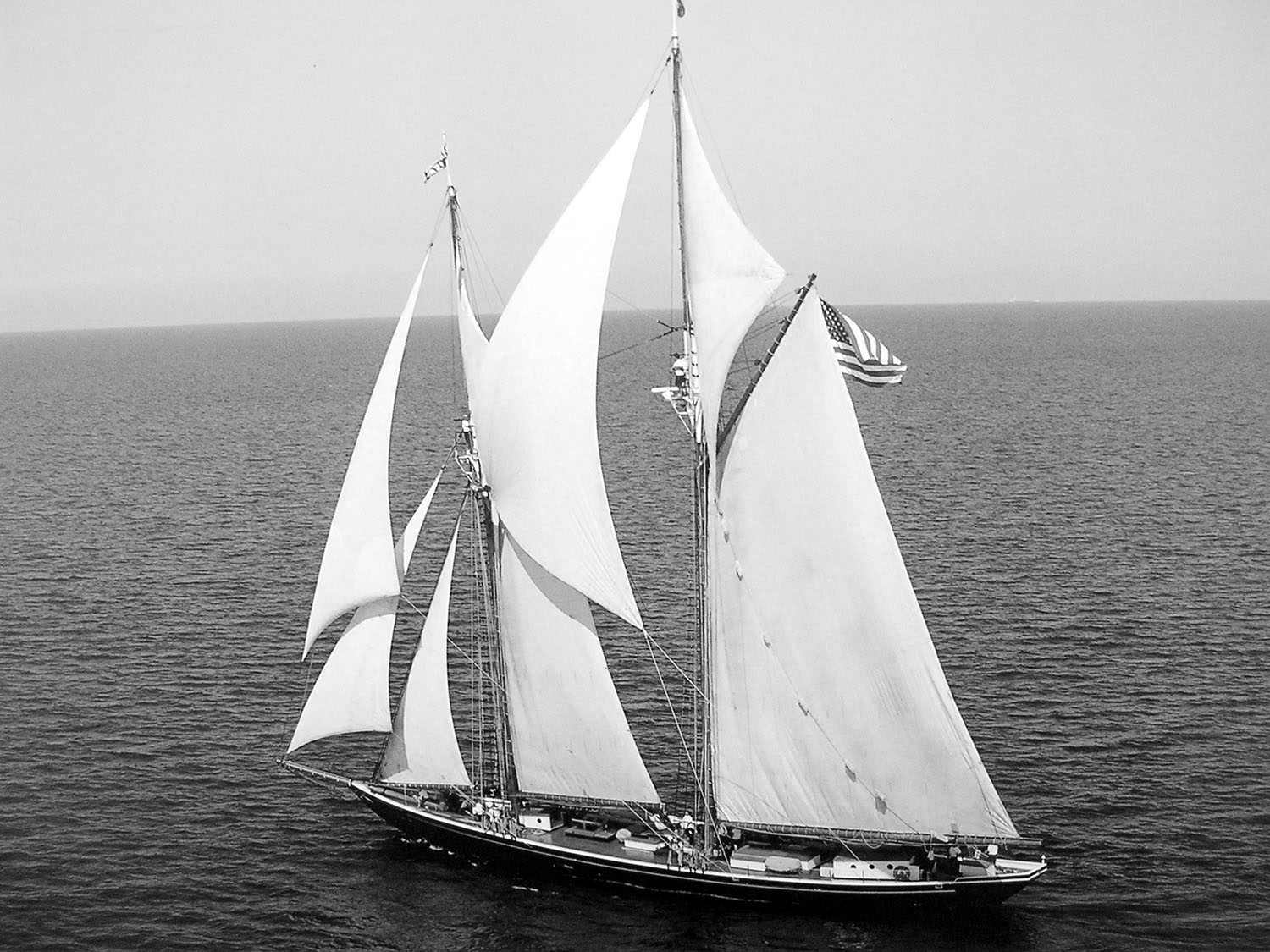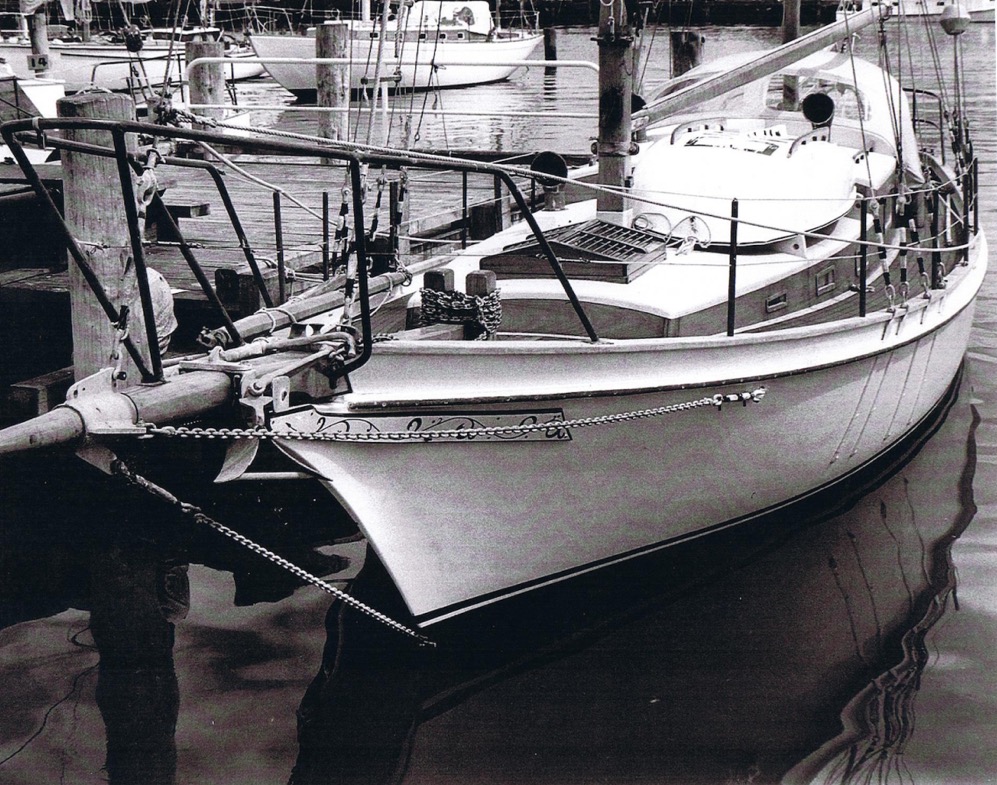
Sail Number: 315
Vessel Type: Rhodes Sloop
Piera Specifications:
LOA: 45’0″ / 13.71m – LWL: 32’0″ / 9.75m – Beam: 11’3″ / 3.44m – Draft: 5’0” / 1.52m – Hull Number: 5002 – Designer: Philip L. Rhodes – Original Owner: Walter Paine, Rutland VT, Blue Hill Bay, Maine – Current Owner: – Year Built: 1955 – Built By: Abeking & Rasmussen, Lemwerder, Germany – Hull Material: Plank-on-Frame – Gross Displacement: 13 tons – Rig: Tall 7/8 -Sail Area:
Historical:
Hinckley Crew Strives to Restore the 1955 Piera: By Craig Crosby
Piera was designed by Philip Rhodes and built at the German Abeking Rasmussen shipyard. Mount Desert Island summer-resident Walter Paine took original delivery. Since then, Piera has changed hands three times, most recently to Harvey Jones in June of 2001. In spite of her Downeast connections, Piera has always been a Nantucket boat.
“That’s what interested Mr. Harvey actually,” Harper said. “Piera is an integral part of the fabric of Nantucket, I think that’s why he fell in love with the boat.”
Harvey also was drawn to Piera’s classic lines and storied racing history. In her prime she was a Bermuda race winner. More recently, she has been successful at Nantucket’s Opera House Cup and other classic yacht regattas.
“Pretty much her life has been day sailing and racing,” Harper said.
The four owners have taken good care of Piera, and except for winter storage, she has remained in continual service since 1955. But the years were telling on the grand old lady. She needed an overhaul to regain her youthful competitiveness and Harvey welcomed the opportunity to restore her to greatness.
“We’re putting new life back into it,” Harper said. “We want to bring her back into good condition and make her competitive again.”
That has been no easy task. The process began with countless hours of research. Harper tracked down the original drawings so Piera could be brought back to as near original condition as possible. Harper talked to the builder and the previous owners. The boat also underwent two independent surveys and a Hinckley survey to determine what needed replacing. By the time work on the boat began, the crew had a good idea of what to expect.
“We came into it with a pretty good idea of what we thought had to be done,” Harper said.
The research also included finding a suitable boatyard to do the work. Harper looked at every yard in New England, but determined that Hinckley could do the best job on the project’s timetable.
“And we’re pretty much right on schedule,” Harper said.
Keeping on schedule is impressive when you consider what has been done to Piera.
“It was pretty much stripped down to the hull,” said Hinckley service manager Rusty Bradford. “Right from stem to stern and top to bottom.”
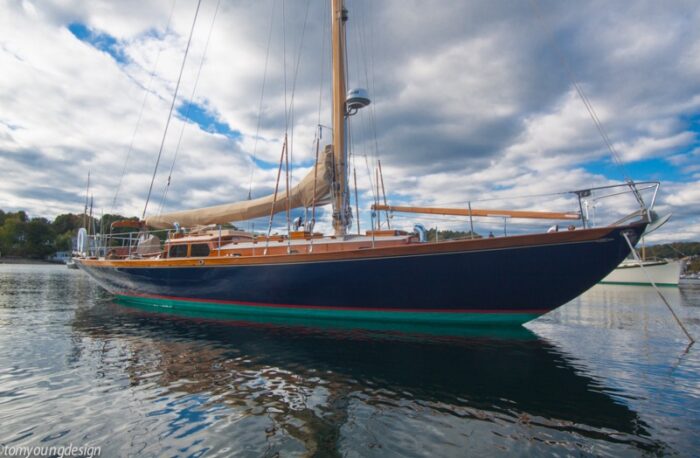
Restoring Piera to original form meant finding the same kind of wood she was built with in 1955. Remarkably, that has not been a problem. Hinckley was able to find a supplier with enough African mahogany to replace all the weakened planks. The toughest material to find was a gigantic length of white oak. The project required a 20-foot-by-19-inch-by-20-inch timber out of which a new forefoot could be carved. Hinckley was finally able to track down a piece large enough, and the crew—dubbed the white oak boys—went to work.
To remove the old forefoot and replace it meant springing the bow planks and refastening them to the new wood leaving the bow section as good or better than new. That’s a tricky proposition.
“It’s just like open heart surgery,” Harper said.
“It’s unbelievable talent,” Bradford said. “They’re an unbelievable crew.”
It was only when the bow planks were sprung and Piera’s frame lay bare, nearly two months into the project, that the crew knew exactly what needed to be replaced. Bradford said the new forefoot is actually closer to what the designer had in mind than what was originally installed. The crew also installed suspension bracing to preserve the hull’s shape. The rigging will be subjected to a thorough going over but won’t be replaced.
“Structurally, the rigging was in really good shape,” Harper said.
Piera goes back into the water in May and will resume her life of day sailing and racing with a renewed vigor. Ultimately, whether or not she is competitive is out of her control.
“She’ll do a lot of it by herself,” Bradford said. “But she’s going to take a crew to do the rest of it.”
Known Racing History:
1996 – Opera House Cup Winner
1974 – Opera House Cup Winner
Provenance (The Wall of Remembrance – The Owners, Crew & Notable Guest):
Owner/Guardian: Walter Paine, Rutland VT, Blue Hill Bay, Maine
Design Number 618
By Ben Stavis, Jan. 2, 2007, updated Nov 23, 2009
The original design, Olsching, was for Magnus Zeppelin. Seven other sisterships were built: Jane Dore IV (designed for the Commodore of the Cruising Club of America), Nutmeg, Renova, Undina, Piera, Scimitar, and Hasty. In addition, Masker and Hi-Q-II are basically varients of this design, even though they have their own design numbers All owners report this design is a very fast, seaworthy, comfortable boat.
Rhodes created several options for this design. There were two rigs, a tall, 7/8 sloop rig. and a shorter, masthead rig for short-handed ocean cruising; on this rig, reefing would be delayed, and there were no running backstays. There were also five different interior configurations, and additional choices within these options. It seems that Rhodes was trying to please many prospective buyers of this design.
In the original designs of 1953, Rhodes drew a deck house, protecting the cockpit and accessible from it. Inside the deckhouse, some boats have a navigation station to port and a sea berth to starboard; others have two seaberths, oilskin lockers, seats and space for crew to put on or take off foul weather gear as they went on or came off watch. Rhodes also drew two different main cabin designs. The first was an innovative galley to starboard and a dinette to port. A few months later, he drew an aft galley and a main cabin with extension transom berths and pilot berths.
In 1955, Rhodes drew three more designs for the interior. All had the galley foward, with a focsle that included a head. This set-up would make sense if the boat had a paid hand. None of the boats were built with this arrangement.
One of these designs (not built) did not have a deck house, and had this space dedicated as an after cabin. In this design, the head was midships, between and convenient to the aft and main cabns, and the companionway was forward and to starboard, from the top of the deck house, so the aft stateroom would not be a thoroughfare. This particular interior was a virtual carry-over from the interior of Copperhead, designed in 1939.
The various plans show that Rhodes was innovative and flexible about interior configurations. He knew that different sailors had different needs.
In 1956, he took the basic design but gave the hull 9″ more beam, for Hi-Q-II (design 655) He also redid the plans for steel construction for Masker (design 659).
About a decade later, when he designed the interior for the Rhodes Reliant, Rhodes took separate modules from the five interior designs to make the unique interior for the Reliant. He took the aft stateroom, midship head, and companionway from a 1955 sketch (based on Copperhead) and joined them to the starboard galley, dinette to port and forward cabin from the original 1953 #618 sketch.
The grandson of the builder of Scimitar recalls the close connection between this design and Carina II:
In his correspondence with my grandfather about the purchase of our plans, Philip L. Rhodes said that he had recently finished the design of Carina II (his favorite according to Henderson) and was offering 618 and 635 as two size variants of the same design. In a phone conversation we came within a whisker of building a sister to Carina II, but my father at the age of 17 said “…no, it is too big, it will be harder to sail, take longer to build and cost too much.” I doubt that I would have had his restraint and wisdom at 17. But for our situation he was right and we are completely satisfied with the 45′ Scimitar.
If anyone were ever interested in building a new boat to design 618, we still have all the patterns for the cast bronze fittings. Damian Purcell
